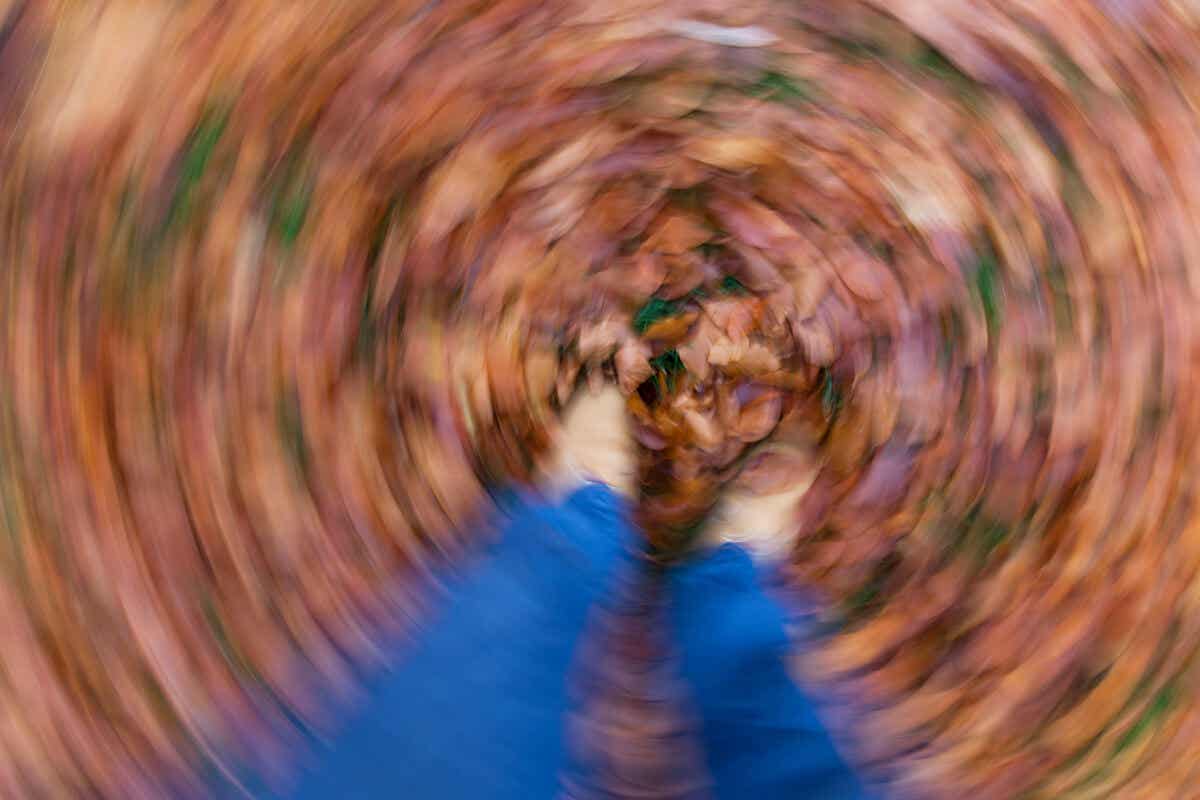What Is Vestibular Stimulation?


Reviewed and approved by the nurse Leidy Mora Molina
Vestibular stimulation can be important to improve a person’s quality of life. The vestibular system is the part of the body responsible for controlling eye movement and balance. It’s located in the inner ear, and environmental factors, genetic factors, or injuries can lead to disorders in this area. There are many ways to treat it, but we’re going to focus on vestibular stimulation.
There are several ways that alterations of this type can affect the patient’s quality of life, although they manifest themselves especially in vision, balance, cognition, hearing and psychologically. The programs are personalized and their benefits are seen in the medium and long term.
What’s vestibular stimulation?
Vestibular stimulation, also known as vestibular rehabilitation, is a therapy used as a treatment for patients suffering from a vestibular disorder. It’s performed in a personalized way, based on a previous diagnosis and always under the supervision of a specialist.
Its objective is to achieve vestibular compensation. In other words, the reorganization and recovery of this system with the brain to achieve greater balance, visual capacity, proprioception and cognition. Although a complete improvement is impossible, it’s been shown to increase the quality of life.
Many studies and research support the application of vestibular stimulation, especially if a specialist performs it. We also know that the effects only manifest themselves if it’s performed consistently or if it’s complemented with other treatment the doctor may recommend.
Before starting a vestibular rehabilitation program, it’s important to identify the condition, its degree of incidence, the most persistent symptoms, and the possible causes. Evidence indicates that the most common disorders are the following:
- Instability (40.2 %)
- Vertigo (31 %)
- Vestibular migraine (28.2%)
- Ménière’s disease (13.8%)
- Vascular disorders (5.7%)
- Chronic subjective dizziness (4.6%)
- Vestibular neuritis (4%)
These are only some of the most frequent, although they can also occur in different realms such as the cognitive (confusion, disorientation, and difficulty concentrating), psychological (anxiety, depression and low self-esteem), auditory (tinnitus, sensitivity, and distorted hearing) and many others.

Keep reading: Find Out Why We Faint
Vestibular stimulation at an early age
Many times, doctors diagnose vestibular disorder at an early age. At this point, it’s important to remember that the nervous system doesn’t reach maturity until the age of 12. The therapies and programs applied earlier can be more successful.
It’s the pediatrician’s responsibility to diagnose if there’s any type of problem with the vestibular system, something that’s generally done through hearing tests, electronystagmography, vestibular myogenic evoked myogenic potentials, computerized dynamic posturography, or electroneurography.
Depending on the symptoms, the specialist may use other complementary tests. We know that the application of vestibular stimulation in children is effective in promoting their motor, spatial, and balance development.
It’s important to remember that the evidence indicates that these therapies are safe for children. They can even be done when they’re only a couple of months old.
Of course, studies and research have shown that vestibular stimulation can be used in adults with a high degree of efficacy.
Also read: 4 Habits that Affect a Child’s Brain Development
Activities that help
Before outlining some vestibular stimulation exercises, you must first remember what we said at the beginning: the programs are applied after a diagnosis and are always personally elaborated. This is in case you suffer from a disorder with chronic symptoms.
Cawthorne-Cooksey exercises
These exercises were designed during the 1940s for soldiers with balance disorders, and they’re often used to treat vertigo. You should perform these movements in a safe place so as to reduce the chance of hitting yourself.
Head/eye movements while sitting
- Look up and down without moving your head or body.
- Look to one side and the other without moving your head or body.
- Extend your arm, pointing your index finger . Fix your gaze for a few seconds on the tip only and then bring it up to your nose and extend it repeatedly.
- Move your head in four directions with your eyes open.
Head/body movements while seated
- Place an object on the floor in front of the chair and bend down to pick it up while looking at it.
- Place an object on the floor to the side of the chair and bend down to pick it up while looking at it.
- Lean forward with the object in your hand and pass it in circular motions behind your calves.
Movements while standing
- Toss a ball from one hand to the other above eye level.
- Sit and stand with eyes open and then alternate while keeping them closed.
- Lean forward and throw a ball from one hand to the other behind the calves.
Gaze stabilization exercises
The function of these exercises is to achieve the ability to focus on an object while stationary or in motion. Examples of some of these are as follows:
- Place two medium-sized objects 11 inches (30 centimeters) apart at eye level. Focus your gaze on one of them for 30 seconds, then alternate with the other (without moving your head).
- Place a medium-sized object at eye level. Look at it for 30 seconds and then close your eyes. Slowly turn your head 20 degrees as you continue to focus on it in an imaginary way.
- Place a small object at eye level. Swing your head up and down and sideways while keeping your gaze fixed on it.
You can make variations in the distance, position, and size of the object depending on how you feel comfortable. Repeat these exercises 4 to 5 times a day.

Brandt-Daroff exercises
They’re frequently used to treat vertigo, vestibular neuritis and even as relief for symptoms of labyrinthitis. You can perform them at home without a specialist and they consist of the following:
- Sit on the edge of the bed with your back straight and slowly turn your head to one side at 45 degrees.
- When doing so, immediately lie down on the opposite side. That is, if you turned your head to the right, you’ll lie on the left and vice versa.
- Hold this position for 30 seconds.
- Return to the position at the edge of the bed and return your head to its natural angle. Alternate this with turning to the other side to perform a complete series.
Vestibular stimulation is effective
Evidence indicates that these exercises are effective and safe for treating vestibular disorders. The improvement can be up to 90% if the person does daily sessions during weekly programs.
You can perform these exercises we’ve described at home without supervision. Others, such as the Epley maneuver or the Semont maneuver do require the participation of a qualified professional – at least to reduce the possibility of injury to the neck or cervical vertebrae.
Keep in mind that their effectiveness depends on many factors, encompassing emotional and physical. You can complement them with an improvement in diet, therapy, psychological support, medication and other treatments indicated by your doctor depending on your case.
All cited sources were thoroughly reviewed by our team to ensure their quality, reliability, currency, and validity. The bibliography of this article was considered reliable and of academic or scientific accuracy.
- Blanco Contreras, M. J., Manzo Valenzuela, L., Mondaca Urra, J., & Zapata Mora, F. Creación de un programa de estimulación vestibular para adultos mayores. 2015.
- Bouccara, D., Sémont, A., & Sterkers, O. Rehabilitación vestibular. EMC-Otorrinolaringología. 2016; 45(1): 1-8.
- Guerra-Jiménez, G., Rodríguez, A. A., González, J. C. F., Plasencia, D. P., & Macías, Á. R. Epidemiología de los trastornos vestibulares en la consulta de otoneurología. Acta Otorrinolaringológica Española. 2017; 68(6): 317-322.
- Han, B. I., Song, H. S., & Kim, J. S. Vestibular rehabilitation therapy: review of indications, mechanisms, and key exercises. Journal of clinical neurology (Seoul, Korea). 2011; 7(4): 184.
- Herdman, S. J. Vestibular rehabilitation. Current opinion in neurology. 2013; 26(1): 96-101.
- López, O. A., Fernández, N. P., & Sánchez, N. Rehabilitación vestibular. Revista de Medicina de la Universidad de Navarra. 2003; 72-76.
- Medeiros, I. R., Bittar, R. S., Pedalini, M. E. B., Lorenzi, M. C., Formigoni, L. G., & Bento, R. F. Vestibular rehabilitation therapy in children. Otology & Neurotology. 2005; 26(4): 699-703.
- Morera, E. A., Capetillo Rodríguez, Y., Espino Castillo, Y., & López Martínez, H. Efectividad de los ejercicios de Brandt-Daroff en pacientes con vértigo posicional paroxístico benigno. Revista Cubana de Medicina General Integral. 2020; 36(3).
- Solís-Gutiérrez, C., Monjarás, S. M. C., Morales, V. M. L., Carrillo-Prado, C., & García-Martínez, J. A. Estimulación vestibular en el desarrollo infantil. Lux Médica. 2019; 14(40): 41-51.
- Tello, G. H. Rehabilitación vestibular en pacientes vertiginosos adultos. 2012.
- Whitney, S. L., & Rossi, M. M. Efficacy of vestibular rehabilitation. Otolaryngologic Clinics of North America. 2000; 33(3): 659-672.
This text is provided for informational purposes only and does not replace consultation with a professional. If in doubt, consult your specialist.








